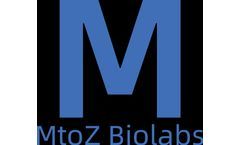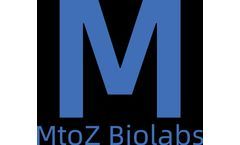Targeting Disease Articles & Analysis: Older
34 articles found
What Is PROTAC Technology? Proteolytic targeting chimera (PROTAC) is a new type of drug design technology that works by inducing the degradation of target proteins. ...
By analyzing these interactions, scientists can identify new biomarkers for disease, develop targeted therapies, or discover novel glycan-binding proteins with potential applications in drug design. 2. ...
This mimetic action allows researchers to enhance or restore the expression of target genes that are otherwise downregulated in diseases such as cancer, neurodegenerative disorders, and cardiovascular diseases. ...
Some of the main functions of peptidomimetics include inhibiting or modulating enzymes & proteins, targeting specific receptors, and enhancing drug stability & bioavailability.Specifically, peptidomimetics can bind to enzymes and block their activity, making them useful in the development of cancer treatment. In addition, peptidomimetics can disrupt or potentiate ...
In biomedical research, antibodies are a powerful tool used in the detection and quantification of target antigens. However, a comprehensive understanding of the antibody requires knowledge of its amino acid sequence, which can be achieved through antibody sequencing.Antibody sequencing is a nucleic acid sequencing process that determines the nucleotide sequence of the gene ...
Furthermore, changes in the mitochondrial proteome may be associated with certain diseases, including neurodegenerative diseases, cancer, heart disease, diabetes, and genetic disorders.Methods of Mitochondrial Protein SequencingMitochondrial protein sequencing typically involves the following steps: firstly, scientists need to extract the ...
Nanoformulation leverages nanotechnology to create drug delivery systems that can improve the efficacy, reduce side effects, and precisely target disease sites. This cutting-edge technology has garnered significant attention from researchers and pharmaceutical companies alike, due to its potential to transform the way medications are formulated and administered. ...
At the heart of this endeavor lies the art of drug design - the strategic and methodical approach to creating molecules that can effectively target and modulate biological pathways to treat disease. One of the primary strategies in drug design is known as de novo design. ...
In medical science research, it is hoped that analysis to identify abnormal metabolic pathways and characteristic biomarkers closely related to diseases will provide a basis for further elucidation of disease pathogenesis. ...
One key advantage that modified and conjugated antibodies have is their potential use in targeted drug delivery, especially in oncology. By attaching drugs or other therapeutic agents to antibodies that have high selectivity for cancer cells, we can deliver potent treatment directly to the disease site, thereby minimizing systemic side effects. ...
At the heart of this endeavor lies the intricate relationship between drugs, their targets, and the diseases they aim to treat. One of the fundamental aspects of drug discovery is the analysis of the drug-target relationship. ...
Radioactive drug conjugates (RDCs), as a particular form of coupling drugs, are formed by combining radioactive isotopes with disease-targeting molecules. According to the application of RDCs, they can be divided into two main categories: diagnostic RDCs and therapeutic RDCs. ...
The purpose of DAC is to treat diseases by targeting and degrading pathological proteins, such as degrading key proteins on the surface of tumor cells in cancer treatment.Common Features of SMDC, ADC, and DACSMDC, ADC, and DAC all utilize advanced structure optimization techniques, combining the active ingredients of drugs with targeted ...
DNM1L acts as a molecular scissor, facilitating the constriction and subsequent division of mitochondria. Disease Associated with DNM1L While DNM1L is crucial for normal cellular function, mutations in this gene can lead to various diseases. One such disease is Charcot-Marie-Tooth disease type 2A (CMT2A), a hereditary ...
In response to these challenges, major pharmaceutical companies have shifted from targeting common diseases to developing drugs for specific diseases. At the same time, these companies are constantly looking for new technologies for new drug development, such as high-throughput screening technology, DNA encoded chemical library, computer-aided ...
In the field of medicine, effectively delivering drugs to the target site in the body is crucial for successful treatment. Over the years, several innovative drug delivery systems have been developed to improve drug efficacy and patient outcomes. ...
In addition, bioinformatics tools are useful in screening and can effectively avoid the off-target effect of siRNA. Chemical Modification of siRNA Ribose modification Modification at the 2' position of the glycosyl group. ...
The Significance of Drug-Disease Relationship Analysis Drug-disease relationship analysis, often referred to as drug-target interaction prediction or network pharmacology, is a multidisciplinary approach that uses computational techniques to predict how drugs interact with biological targets associated with ...
Autoimmune disease target - IL-17 Family IL-17 plays an important role in promoting autoimmune diseases such as psoriasis, psoriatic arthritis, and ankylosing spondylitis (AS). ...
It is well-known for its role in promoting type 2 immune responses, such as allergic diseases. In 2021, a monoclonal antibody targeting TSLP was approved for the treatment of severe asthma. ...












